- Home›
- Healthy Living›
- 8 Effective Home Remedies To Treat Achilles Tendon Pain
8 Effective Home Remedies To Treat Achilles Tendon Pain
By: Priyanka Maheshwari Sat, 22 July 2023 5:07:26
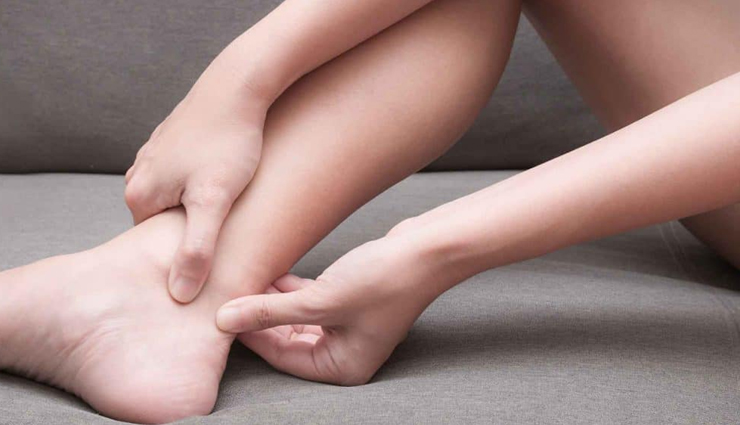
The Achilles tendon, a robust band of tissue connecting the calf muscles to the heel bone, plays a vital role in enabling us to walk, run, and jump. However, factors such as overuse, improper footwear, or certain medical conditions can lead to inflammation and pain in the Achilles tendon, commonly known as Achilles tendonitis.
If you're experiencing discomfort, swelling, or tenderness in the back of your heel, it's possible that you're dealing with Achilles tendon pain. The good news is that there are several effective home remedies that can provide relief and promote healing.
In this comprehensive article, we will explore ten natural and easy-to-follow remedies to soothe Achilles tendon pain. From simple stretching exercises and self-massage techniques to herbal remedies and lifestyle adjustments, we have compiled a range of solutions to address this common ailment without resorting to medication or invasive treatments.
However, it's crucial to consult with a healthcare professional before embarking on any home remedies to ensure accurate diagnosis and rule out any serious injuries. So, let's delve into these natural remedies that can aid in relieving Achilles tendon pain and help you regain comfort and mobility for an active life.

Causes and Risk Factors of Achilles Tendinitis
To prevent and effectively manage Achilles tendinitis, it's crucial to understand the various factors that can contribute to its development. Here are some common causes and risk factors associated with Achilles tendinitis:
Overuse: Excessive and repetitive use of the Achilles tendon, such as in running, jumping, or certain sports, can lead to tendon inflammation and injury.
Improper Footwear: Wearing shoes that lack proper support or have worn-out cushioning can alter the foot's biomechanics, placing additional strain on the Achilles tendon.
Tight Calf Muscles: Having tight calf muscles can increase tension on the Achilles tendon, making it more susceptible to inflammation.
Age and Gender: Active individuals between the ages of 30 and 50 are more prone to Achilles tendinitis, and men tend to be at a higher risk than women.
Physical Conditions: Certain medical conditions, like flat feet, high arches, and obesity, can affect foot mechanics and contribute to tendon stress.
Sudden Increase in Activity: A rapid and significant increase in physical activity without proper conditioning can strain the Achilles tendon, leading to inflammation.
Poor Training Techniques: Inadequate warm-up or neglecting proper stretching before exercise can elevate the risk of Achilles tendinitis.
Previous Injuries: Individuals with a history of Achilles tendon injuries or previous tendinitis episodes may be more susceptible to recurring problems.
Certain Medications: Some medications, particularly fluoroquinolone antibiotics and corticosteroids, have been associated with an increased risk of tendon injuries, including Achilles tendinitis.
Genetic Predisposition: Some people may have a genetic predisposition to weaker tendons, making them more vulnerable to tendon injury and inflammation.
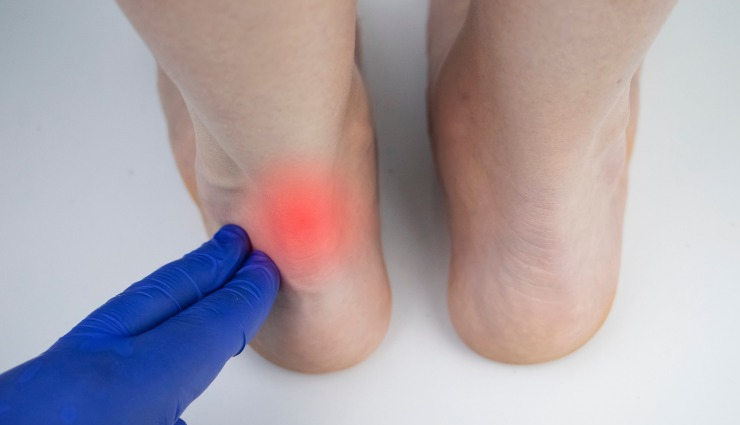
Signs and Symptoms of Achilles Tendinitis
Recognizing the signs and symptoms of Achilles tendinitis is crucial for early detection and appropriate treatment. Here are the common indicators of this condition:
Pain and Tenderness: The primary symptom of Achilles tendinitis is pain along the back of the heel, where the tendon connects to the heel bone. The pain may also extend to the lower leg.
Stiffness: Individuals with Achilles tendinitis often experience stiffness in the affected area, especially after periods of rest or inactivity.
Swelling: Inflammation of the Achilles tendon can lead to swelling around the affected area, making it appear slightly enlarged.
Tenderness to Touch: The Achilles tendon may feel tender to the touch, and pressing on the affected area can elicit pain.
Morning Discomfort: Many people with Achilles tendinitis report experiencing more pain and stiffness in the morning or after prolonged periods of rest.
Increased Pain during Activity: Pain may worsen during physical activity that involves the use of the calf muscles or repetitive movements, such as running or jumping.
Gradual Onset: The symptoms of Achilles tendinitis typically develop gradually over time, and the pain may become more pronounced with continued activity.
Limited Range of Motion: Individuals may notice a decrease in their ankle's range of motion due to the inflammation and discomfort.
Crepitus: In some cases, a creaking or cracking sensation known as crepitus may be felt when moving the ankle or pressing on the Achilles tendon.
Redness and Warmth: In severe cases, the skin around the Achilles tendon may appear red and feel warm to the touch.
Tips to Treat Achilles Tendinitis Naturally
Dealing with Achilles tendinitis can be painful and disruptive, but there are several natural remedies that can help alleviate discomfort and promote healing. Here are ten tips to treat Achilles tendinitis naturally:
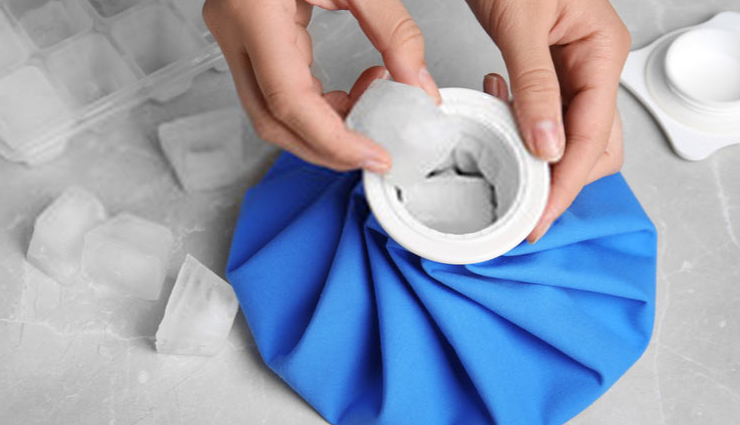
# Rest and Ice
Rest and ice play pivotal roles in the initial treatment of Achilles tendinitis. It is imperative to allow the Achilles tendon sufficient time to heal and decrease inflammation. Prioritize rest as a key aspect of managing Achilles tendinitis by refraining from activities that strain the affected tendon, such as running, jumping, or high-impact exercises. Overuse of the tendon can exacerbate inflammation and impede the healing process, so it is essential to limit weight-bearing activities and provide ample time for the foot to recover.
The application of ice to the affected area can significantly alleviate pain and reduce swelling. Ice works by constricting blood vessels, thereby reducing blood flow to the inflamed region and minimizing swelling. To properly ice the Achilles tendon, place a cold pack or ice pack wrapped in a thin cloth on the back of your heel for 15-20 minutes at a time, multiple times a day. It is crucial to avoid direct contact between ice and the skin to prevent frostbite. Incorporating these rest and ice measures into your treatment regimen can greatly aid in the recovery process for Achilles tendinitis.

# Stretching Exercises
Stretching exercises play a pivotal role in the treatment and rehabilitation of Achilles tendinitis, as they contribute to enhanced flexibility, reduced tension in the calf muscles, and facilitate healing of the inflamed tendon. Below are some effective stretching exercises to effectively address Achilles tendinitis:
Calf Stretch: Stand at an arm's length from a wall and place your hands on it at shoulder height. Take a step back with one leg, keeping it straight and pressing the heel into the floor. Slightly bend the front knee while maintaining the back leg straight. Lean forward into the wall until you experience a gentle stretch in the calf of the back leg. Hold the stretch for 20-30 seconds, then switch legs. Perform this stretch 3-4 times on each leg.
Towel Stretch: Sit on the floor with your legs extended straight in front of you. Loop a towel or resistance band around the ball of one foot. Gently pull the towel towards you while keeping your knee straight. You should feel a stretch along the back of your calf. Hold the stretch for 20-30 seconds, then switch to the other foot. Repeat this stretch 3-4 times on each foot.
Heel Drop Stretch: Stand on a step or a curb with your heels hanging off the edge. Lower your heels down as far as you comfortably can. You should feel a stretch in your calves and Achilles tendon. Hold the stretch for 20-30 seconds, then rise back up. Perform this stretch 3-4 times.
Wall Calf Stretch: Face a wall and place both hands on it at shoulder height. Step one foot back, keeping it straight, and bend the front knee slightly. Lean into the wall, keeping the back leg straight, until you feel a stretch in the calf of the back leg. Hold the stretch for 20-30 seconds, then switch legs. Repeat this stretch 3-4 times on each leg.
Eccentric Calf Raises: Stand on the edge of a step or a curb with the balls of your feet on the edge and your heels hanging off. Rise up onto your toes, then slowly lower your heels below the step's level. This eccentric movement focuses on the lengthening of the calf muscles and can aid in Achilles tendon healing. Perform 3 sets of 15 repetitions to reap the benefits of this exercise. Incorporating these stretching exercises into your daily routine can effectively alleviate Achilles tendinitis and accelerate the healing process.
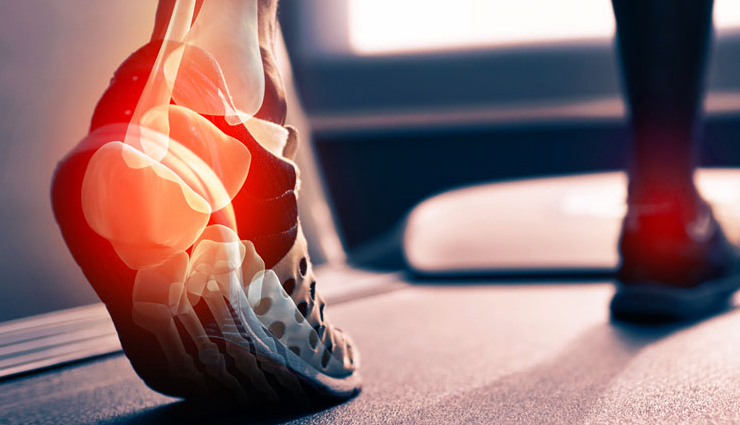
# Proper Footwear
Choosing the right footwear is crucial in the treatment of Achilles tendinitis as it can significantly impact the stress on the Achilles tendon and promote healing. Here are some tips for selecting proper footwear to treat Achilles tendinitis:
Supportive Shoes: Opt for shoes that provide adequate arch support and cushioning in the heel area. Good support can help distribute weight evenly and reduce the strain on the Achilles tendon.
Heel Counter: Look for shoes with a firm and supportive heel counter (the back part of the shoe that cups the heel). A well-designed heel counter can stabilize the foot and reduce excessive movement that may aggravate the tendon.
Low Heel: Avoid shoes with high heels or excessive heel elevation. High heels can shorten the Achilles tendon and place extra stress on it, worsening the condition.
Flexible Soles: Choose shoes with flexible soles that allow for natural foot movement. Shoes that are too rigid can hinder proper foot motion and lead to increased tension on the tendon.
Proper Fit: Ensure that the shoes fit well and have enough room in the toe box. Shoes that are too tight can compress the foot and cause additional strain on the Achilles tendon.
Orthotic Inserts: Consider using orthotic inserts or shoe inserts recommended by a healthcare professional to provide additional support and alignment for your foot.
Stability and Motion Control: If you have flat feet or overpronation (inward rolling of the feet), opt for shoes with stability or motion control features to help correct your gait and reduce stress on the tendon.
Avoid Worn-Out Shoes: Replace old or worn-out shoes, as they may no longer provide the necessary support and cushioning.
Lace-up Shoes: Choose shoes with laces or straps that allow you to adjust the fit and provide better support for your feet.
Specific Athletic Shoes: If you engage in physical activities or sports, consider using athletic shoes specifically designed for the activity, such as running shoes for running or cross-training shoes for gym workouts. These shoes often have features that can reduce impact and protect the Achilles tendon during exercise.
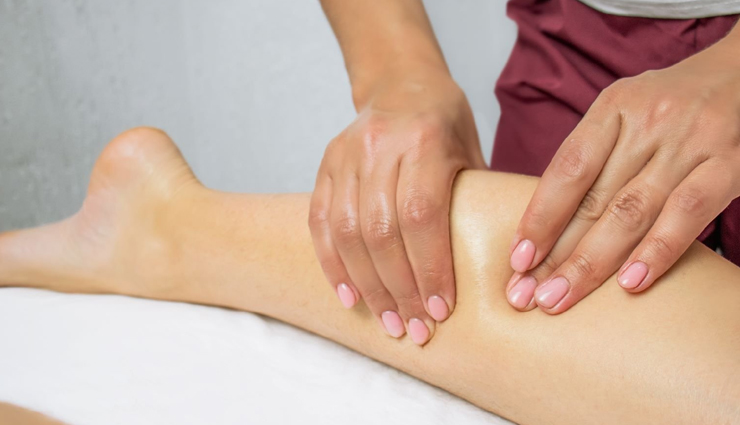
# Calf Muscle Massage
Calf muscle massage presents an effective and natural approach to alleviate Achilles tendinitis. By massaging the calf muscles, you can successfully relieve tension, reduce inflammation, and enhance blood flow to the affected area, which fosters the healing process. Here's a step-by-step guide on performing calf muscle massage for treating Achilles tendinitis:
Warm-Up: Prior to initiating the massage, it is crucial to warm up the calf muscles. You can achieve this by taking a warm shower, using a heating pad, or applying a warm towel to the area for a few minutes.
Apply Massage Oil: Smoothly apply a small amount of massage oil or lotion to your hands, reducing friction and ensuring fluid movements during the massage.
Commence with Gentle Strokes: Initiate the massage by utilizing gentle strokes with your hands, effectively warming up the calf muscles. Begin from the ankle and move upwards towards the knee.
Circular Motions: Employ circular motions with your thumbs or fingers, concentrating on the areas with noticeable tension or tightness. Gradually escalate the pressure as the muscles relax.
Focus on Trigger Points: Identify any trigger points or knots in the calf muscles and apply targeted pressure to these areas. Hold the pressure for a few seconds before releasing.
Incorporate Kneading Techniques: Integrate kneading techniques using your fingers or knuckles to further address tight areas and enhance blood circulation. Gently knead the calf muscles, avoiding excessive pressure.
Stretching the Calf: While massaging, consider including gentle stretches of the calf muscles. For instance, perform a calf stretch by placing the ball of your foot on a wall or elevated surface and leaning forward.
Repeat on Both Legs: Conduct the calf muscle massage on both legs, even if only one Achilles tendon is affected. This approach maintains balance and helps prevent potential issues on the other side.

# Elevation
Elevation is a simple yet effective home remedy to treat Achilles tendinitis and reduce swelling in the affected area. Elevating the foot and leg helps to improve blood circulation and lymphatic drainage, which can aid in the healing process and alleviate discomfort. Here's how to properly elevate the leg to treat Achilles tendinitis:
Find a Comfortable Position: Lie down on a flat surface, such as a bed or a sofa, and make sure you are in a comfortable position.
Prop Up the Leg: Gently lift the affected leg and prop it up on a few pillows or cushions. The elevation should be such that the foot is positioned higher than the level of the heart. This helps in promoting the return of blood and fluids from the lower extremities to the upper body.
Maintain Elevation: Keep the leg elevated for about 15 to 20 minutes at a time, several times a day. You can perform elevation sessions multiple times throughout the day, especially after physical activities or when experiencing pain and swelling.
Combine with Rest: During the elevation period, take this time to rest and relax. Avoid putting weight on the affected leg and allow it to recover.
Continue Regularly: Consistency is key. Make elevating the leg a part of your daily routine until the swelling and discomfort subside.

# Herbal Remedies
Herbal remedies can be a complementary approach to help alleviate symptoms and support the healing process of Achilles tendinitis. However, it's essential to consult with a healthcare professional before using any herbal remedies, especially if you have underlying medical conditions or are taking medications. Here are some herbal remedies that may be beneficial for Achilles tendinitis:
Arnica: Arnica is a popular herb known for its anti-inflammatory properties. Applying arnica gel or cream topically to the affected area can help reduce inflammation and pain associated with Achilles tendinitis.
Turmeric: Turmeric contains a compound called curcumin, which has potent anti-inflammatory effects. Adding turmeric to your diet or taking curcumin supplements may help reduce inflammation and promote healing.
Ginger: Ginger is another herb with strong anti-inflammatory properties. You can consume ginger in various forms, such as ginger tea or adding fresh ginger to your meals.
Boswellia: Boswellia, also known as Indian frankincense, is a resin that has anti-inflammatory properties. Boswellia supplements or creams may help reduce inflammation and alleviate Achilles tendinitis symptoms.
Comfrey: Comfrey is a traditional herbal remedy for various musculoskeletal conditions, including tendinitis. Comfrey creams or ointments can be applied topically to the affected area for pain relief.
Willow Bark: Willow bark contains a natural compound called salicin, which is similar to aspirin and has pain-relieving properties. Willow bark supplements may help alleviate pain associated with Achilles tendinitis.
Eucalyptus: Eucalyptus oil has analgesic and anti-inflammatory properties. Diluted eucalyptus oil can be applied topically to the affected area for pain relief.
St. John's Wort: St. John's Wort is commonly used for its mood-enhancing effects, but it also has anti-inflammatory properties. St. John's Wort oil can be applied topically to help reduce inflammation.
Lavender: Lavender oil has soothing and anti-inflammatory properties. Diluted lavender oil can be massaged onto the affected area to provide relief from pain and discomfort.
Chamomile: Chamomile has anti-inflammatory and calming properties. Chamomile tea or chamomile essential oil can be used for relaxation and to reduce inflammation.
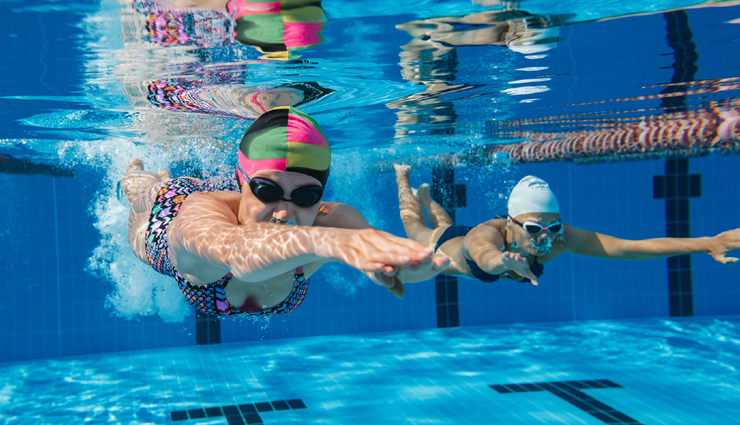
# Non-Impact Exercises:
Non-impact exercises can be beneficial for individuals with Achilles tendinitis as they reduce stress and strain on the affected tendon while still providing an opportunity for physical activity and rehabilitation. Here are some non-impact exercises that can help treat Achilles tendinitis:
Swimming: Swimming is a low-impact exercise that engages the muscles without putting pressure on the Achilles tendon. It can help improve cardiovascular fitness and overall strength while allowing the injured tendon to heal.
Cycling: Stationary or outdoor cycling is a non-impact exercise that provides an excellent workout for the lower body without placing excessive stress on the Achilles tendon. It can help maintain fitness levels and promote blood circulation.
Water Aerobics: Water aerobics classes involve performing exercises in the water, which provides buoyancy and reduces the impact on the joints and tendons. Water aerobics can help improve strength, flexibility, and range of motion without exacerbating Achilles tendinitis.
Elliptical Training: Using an elliptical trainer is a low-impact alternative to running or jogging. It mimics the motion of walking or running but with reduced impact on the feet and ankles, making it suitable for individuals with Achilles tendinitis.
Rowing: Rowing is a full-body workout that engages the muscles without placing stress on the Achilles tendon. It can be an effective non-impact exercise for cardiovascular fitness and strengthening the upper and lower body.
Yoga: Yoga involves gentle stretching and strengthening exercises that can benefit individuals with Achilles tendinitis. It helps improve flexibility, balance, and core strength while promoting relaxation.
Pilates: Pilates focuses on core strength and controlled movements, which can be beneficial for individuals with Achilles tendinitis. It offers a low-impact option for improving overall body strength and stability.
Resistance Band Exercises: Resistance band exercises allow for targeted strengthening of muscles without putting excessive pressure on the Achilles tendon. These exercises can be adapted to the individual's needs and level of comfort.
Tai Chi: Tai Chi is a low-impact martial art that involves slow, controlled movements and deep breathing. It can improve balance, coordination, and flexibility, making it suitable for individuals with Achilles tendinitis.
Isometric Exercises: Isometric exercises involve contracting muscles without joint movement. They can be useful for strengthening the muscles around the Achilles tendon without causing additional strain.
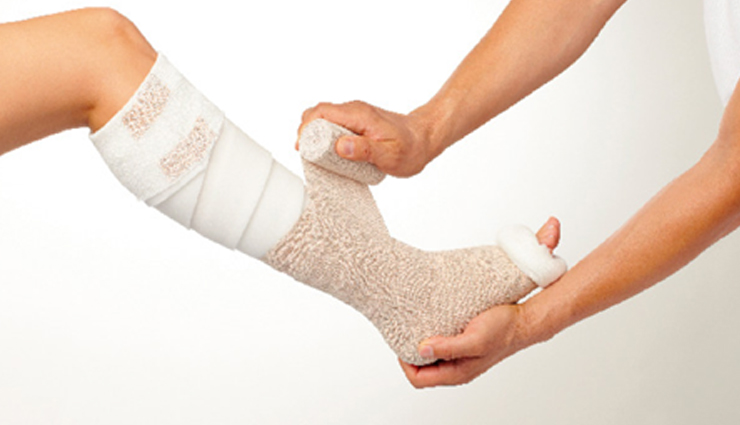
# Compression
Compression can be an effective part of the treatment plan for Achilles tendinitis. Applying compression to the affected area helps reduce swelling, provides support to the tendon, and can alleviate discomfort. Here are some tips on how to use compression to treat Achilles tendinitis:
Compression Bandage: Use a compression bandage or wrap specifically designed for the lower leg. Start wrapping from the base of the foot and work your way up the calf, ensuring that the bandage is snug but not too tight. Avoid wrapping too tightly, as it can impede blood circulation.
Compression Sleeves: Compression sleeves are available in various sizes and provide consistent pressure to the Achilles tendon and surrounding muscles. They are easy to slip on and off, providing support and compression during activities and rest.
Compression Socks: Compression socks can be worn throughout the day to promote circulation and reduce swelling. They are particularly useful for individuals who experience discomfort and swelling in the lower leg and ankle.
Wear During Activities: Use compression during activities that may aggravate the condition, such as walking, running, or exercising. The compression helps stabilize the tendon and minimizes excessive movement that can lead to further irritation.
RICE Method: Consider combining compression with the RICE method (Rest, Ice, Compression, Elevation) to manage Achilles tendinitis effectively. This combination can help reduce inflammation and promote healing.





